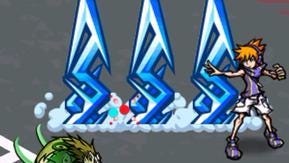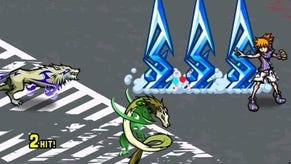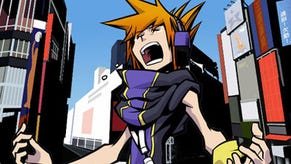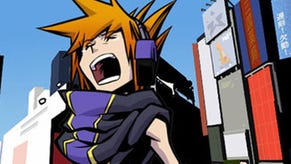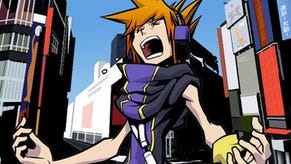Subarashiki Kono Sekai
The artist formerly known as...
What mixes up this generally orthodox DS play mechanic is that you must also use the D-pad (or four face buttons if you're left-handed) to input rhythm action style combos for another character's attacks on the top screen. By tapping a directional button a further string of three of four different possible combinations appears on screen. You must then complete the run of inputs before you're hit by the enemy to successfully complete an attack. Essentially the game is asking you to fight two battles at once - each one with different skills and rules.

This is then further complicated by the fact that each of the top character's combination moves (in the demo this character was Shiki) has a number value attached to the end of it. At the very top of the upper screen a number of cards (five in the demo) are displayed, each one with a large number printed on it and an accompanying symbol indicating 'higher', 'lower' or 'equal to'. The idea is to input combination moves which are tied to a number that is higher, lower or equal to the active card at the top of the screen. Successfully meeting the criteria of all of the cards at the top (over the course of five separate attacks) unlocks a new badge for Neku on the bottom screen to use in his fight.
If that all sounds extremely complicated that's because it really is. It took us a good fifteen minutes to work out what on earth was going on over four of five separate battles. But, as Kando has earlier assured, soon after the game clicked and we were able to concentrate on what was happening on both screens at once with surprising confidence. Occasionally we got stuck on the top screen (which requires more though than reflex) leaving our right hand to mash the bottom screen in the vague hope it would buy thinking time but, in the main, the system works extremely well.
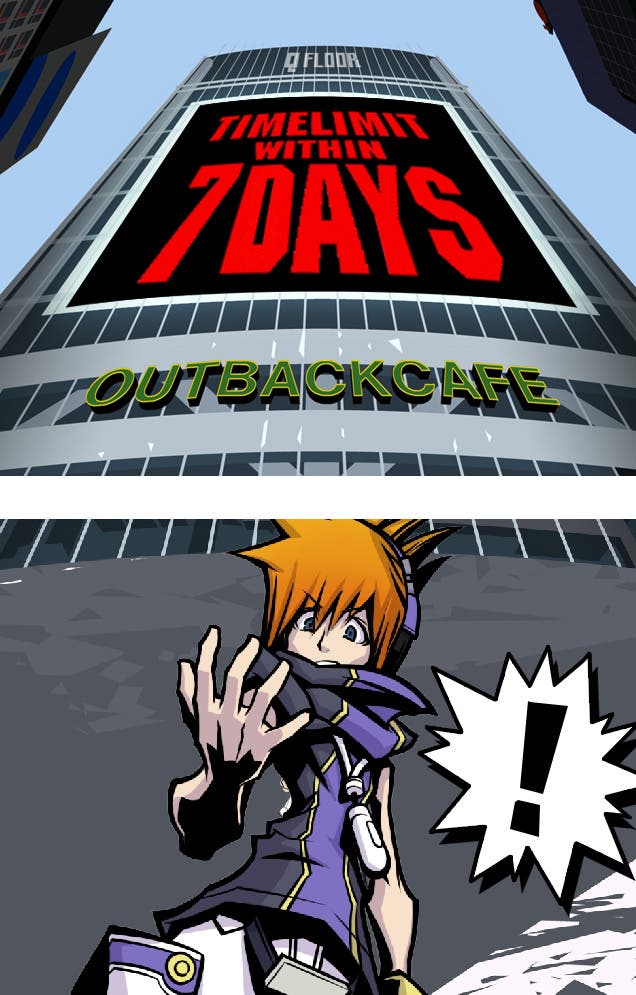
Much of the game's appeal will lie in gathering clues from the thoughts of passers by, completing set tasks within the seven day level structure, as well as by collecting over 300 different badges. "Collecting badges will for a crucial part of the gameplay," Kando assured us. "It's with this system that players will be able to deeply customise Neko and, in doing so, emphasise different fighting styles to suit their own preference."
It's pleasing to see Square-Enix investing so much energy and platform into this project (it's promotional pages appear right at the front of the show guide as one of the key Japanese titles for this year). The game stands out as being arrestingly innovative - especially as it comes from a company who mostly thrives on releasing marvellous technical updates to well established genres. With a Japanese release date of late July here's hoping that the company's renewed pledge to bring games to West (and specifically Europe) quicker and more frequently will apply here.
Subarashiki Kono Sekai is coming to the Nintendo DS in Japan in July, and will be published by Square-Enix. A Western release has yet to be confirmed. Eager readers can see what the game looks like in action over on EGTV.

